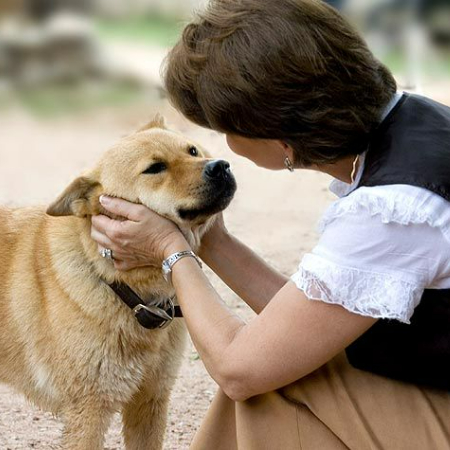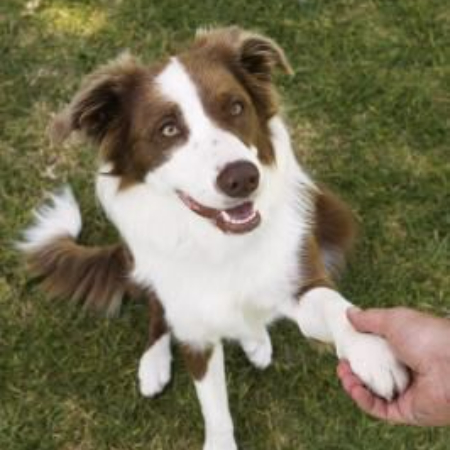Canine Cognition: How Dogs Think, Learn, and Problem-Solve
Though they are frequently referred to as “man’s best friend,” have you ever considered how much of the outside world dogs actually comprehend? Dogs think and interact with their surroundings in a different way, whether they’re figuring out new skills, solving problems, or just giving us that soulful, large gaze. How precisely do they learn, think, and solve issues, though?
We’ll delve deeply into the area of canine cognition in this article, a branch of science devoted to comprehending how dogs’ brains function. However, don’t worry! To help you learn everything there is to know about your furry friend’s incredible mind without becoming bogged down by technical jargon, we’ll keep things lighthearted and easy.
A Dog’s Perspective: How Do Dogs See the World?
We must first comprehend how dogs view the world in order to investigate how they learn and solve problems. Dogs and humans have some striking differences in terms of senses, yet they also have certain commonalities.
Vision: Dogs perceive the world in a different way than people. Their vision is far better in low light, even if they can’t see every color we can (they generally perceive hues of blue and yellow).

This is due to the fact that their eyes are made to detect movement, particularly in low light. Your dog will thus notice if a squirrel rushes past the window in the dead of night, even though they may not enjoy the vivid colors of your living room!
Hearing: Your dog has extremely sensitive hearing, as seen by the twitching of their ears when they detect sound from a distance. Compared to humans, dogs have far higher frequency hearing. This explains why, even from three rooms away, they become so delighted when they hear the crinkling of a food wrapper!
Smell: Dogs excel in this sense. A dog’s greatest strength is its keen sense of smell. Their sense of smell is 40 times stronger than ours because they have up to 300 million scent receptors in their noses as opposed to our meager 5 million.
Dogs have the ability to detect a wide range of objects, including individual food ingredients, the emotions of other animals, including humans, and even a person’s long-distance fragrance. Dogs are utilized in search and rescue operations as well as explosives and drug detection due to this aptitude.
We can gain a better understanding of how dogs process information and make decisions by studying how they view the world.
How Dogs Learn
Canines are very intellectual animals. They pick up knowledge from experience, observation, and instruction, just like people do. Dogs learn primarily in three ways:
Classical Conditioning: Recall the dogs and Pavlov from classical conditioning? A dog will learn to associate two objects that are frequently paired together through a process known as classical conditioning.

Each time Pavlov fed the dogs in his well-known experiment, he rang a bell. After a while, even in the absence of food, the dogs started to drool at the ring of the bell. They were now conditioned to link food with the bell.
It’s possible that your dog lives a daily life that involves classical conditioning. For instance, your dog will become excited when they see the leash if you consistently get it immediately before going for a walk—even if you’re simply shoving it out of the way!
Operant conditioning: This method of instruction uses incentives and penalties. Dogs pick up fast that some actions bring about good things (treats, praise, or playing) while other actions bring about bad things (such being ignored or hearing a strong “no”).
When teaching fundamental commands like “sit,” “stay,” or “roll over,” most dog trainers employ this technique. When your dog knows that sitting on command results in a treat, they’ll be more inclined to do it again later on.
Social Learning: Dogs are also quite good at picking up new skills through social observation. To learn how to carry out particular duties or act in particular circumstances, they can observe humans and other animals.
A dog might try to imitate another dog’s behavior, such as completing a problem to obtain a treat, in order to receive one of their own. Dogs seem to be able to tell when we’re happy, unhappy or even stressed out because they are also able to read human body language and emotions.
Problem-Solving Skills: The Smart Side of Dogs
Let’s investigate dogs’ capacity for problem-solving now that we are aware of how they learn. Because they are inherently problem solvers, dogs frequently demonstrate this through play, curiosity, and interaction with their surroundings.
The capacity of dogs to solve problems is one amazing feature of canine cognition. Dogs frequently exhibit amazing perseverance and intelligence in experiments where they are given food puzzles, toys that require them to figure out how to earn a treat. Some dogs will experiment with various techniques, such as manipulating the toy with their noses or paws until they find one that works. This demonstrates that dogs are capable of problem-solving and behavior modification to accomplish objectives.
Dogs are also able to draw connections between things and behaviors. For example, if you educate your dog that when they press a button, a treat will come out, and they will learn to press the button anytime they are hungry or want a snack. Canine cognition is impressive when it comes to its capacity to connect actions to results.
Can Dogs Understand Human Language?
A fascinating feature of canine intelligence is its comprehension and emulation of human language. Dogs can learn to link words to actions, objects, and even feelings, even though they do not have the same level of language comprehension as humans.
The majority of dogs are capable of learning the meaning of several dozen words, particularly when given constant indications or rewards. Chaser, a Border Collie that knew over a thousand words and could identify several toys by name, holds the record for the most words understood by a dog. Chaser was not only able to grasp simple directions like “take the ball to the box” or “touch the frisbee with your paw,” but she was also able to obey more complicated ones.
If you give your dog clear gestures or body language along with a basic order, your dog can grasp it even if they aren’t as verbal as Chaser. Dogs typically react to our tone of voice, motions, and facial expressions because of this, even if they don’t fully comprehend what we’re saying.
The Emotional Intelligence of Dogs
It’s no secret that dogs have a keen sense of human emotions. Studies have indicated that dogs are able to identify human emotions and react appropriately. Dogs are able to distinguish between human facial expressions such as happiness, anger, and sadness, for instance. They can also read subtle cues in our body language and voice, which is why they frequently exhibit sympathetic behavior when we’re unhappy or exuberant behavior when we’re joyful.
Certain canines, particularly those that have been trained as assistance or therapy animals, have a remarkable ability to react to human emotions. They show how humans and dogs have a strong emotional bond and can offer consolation to those who are worried, stressed, or grieving.
There are two sides to this emotional intelligence. Dogs are emotional beings with a wide spectrum of feelings, from happiness and excitement to fear and anxiety. Dogs and humans create close relationships, and many dog owners say their pets show a great sense of empathy in understanding and meeting their needs.
The Limits of Canine Cognition
Dogs have certain cognitive limitations despite their extreme intelligence and emotional sensitivity. For example, dogs’ ability to reason abstractly differs from that of humans. Their thinking is more grounded in reality, emphasizing instantaneous gains and outcomes over hypothetical scenarios or long-range planning.

Dogs may also find it difficult to perform tasks that call for a new style of thinking because they primarily rely on their senses—especially smell and sight—when problem-solving. Dogs’ intellect is simply tailored to fit their particular perspective of the world, not because they aren’t intelligent.
Conclusion: Celebrating Your Dog’s Incredible Mind
Dogs may lack the mental capacity to comprehend philosophy or answer complicated arithmetic problems, but they do possess a unique intellect that makes them excellent companions and problem-solvers. Dogs’ minds are busy with many things, from conditioning them to learning new skills to comprehending human emotions and even solving puzzles!
Remember this the next time your dog learns a new command or opens the treat jar: you’re not just playing with a cute pet; you’re playing with a highly intelligent, sensitive, and clever creature. They may not always be able to comprehend what we say, but they are masters at reading our emotions.
Doglime for more dog-related information.
Tags










